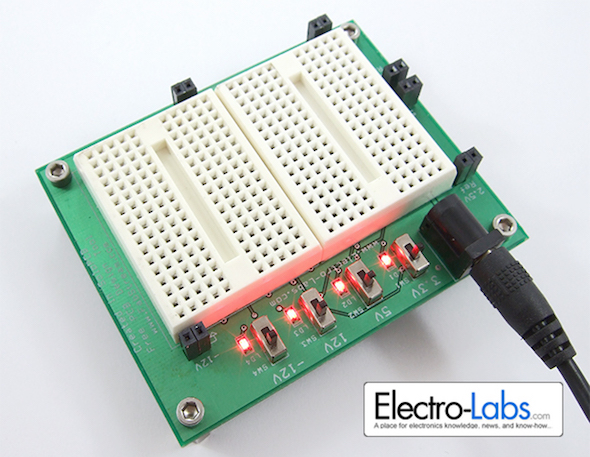Prototyping board with built-in power supply

This prototyping board with built-in regulated power supplies was designed by Electro-Lab and consists of four independent DC-DC buck converters based on LM2675-ADJ and generates 3.3V, 5V, 12V and -12V at 1A.
Prototyping is a useful and powerful method in electronics which lets us analyze a circuit before using it in a system or turning it into a product. In this process we may need a single supply or multiple supplies to power the circuit depending on the type of the application. For example, an op-amp circuit may need a symmetrical supply such as +12V and -12V or a logic circuit may require both 5V and 3.3V at the same time. Some applications may need three or more. This means we should have a bench supply with multiple outputs or multiple bench supplies in the environment. This may not be always possible. This DIY Prototyping Board is designed to provide all the most used supply voltages that a designer will need during prototyping a circuit. The switching power supplies on the board output 3.3V, 5V, 12V and -12V rated at 1A independently. In addition those there are two precise voltage references at 5V and 2.5V provided especially for op-amp based applications.







